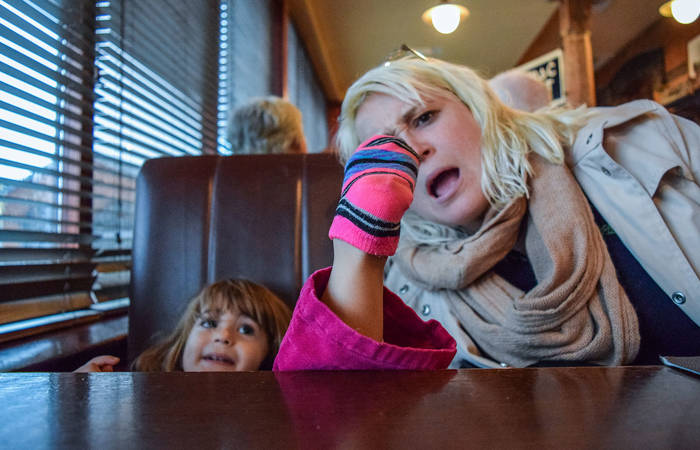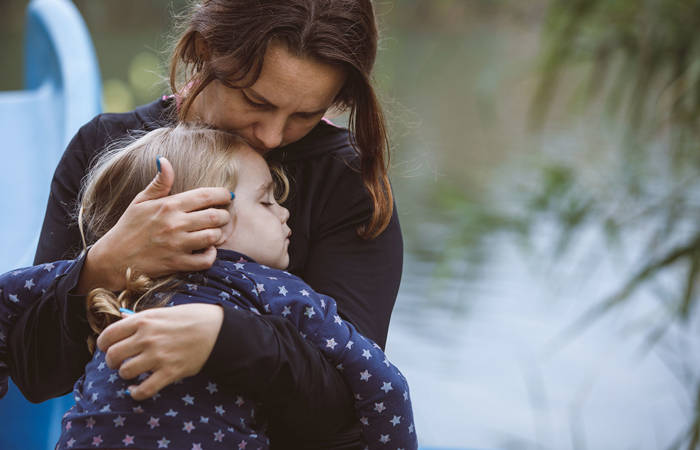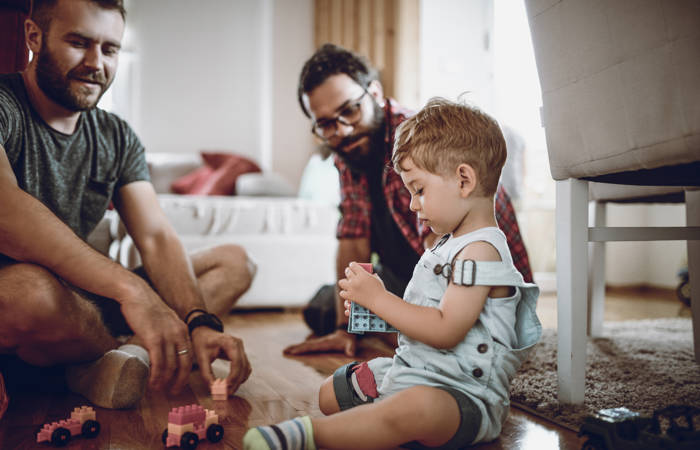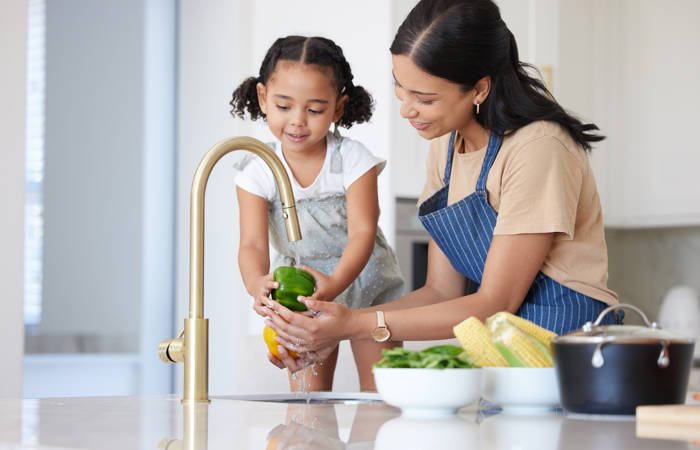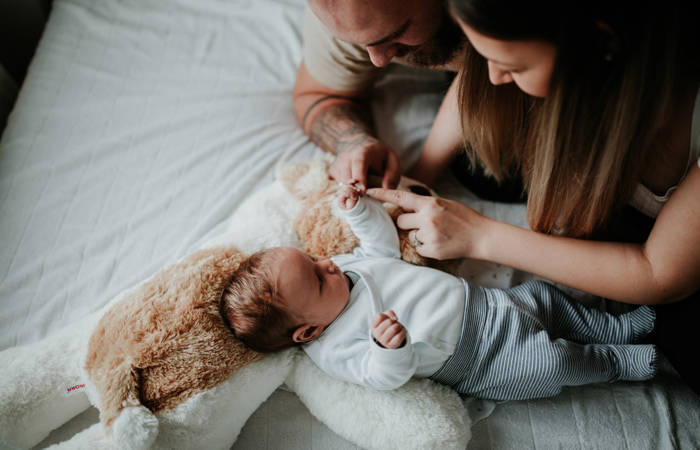Like what you see?
Sign up to receive more free parenting advice.
Thank you for subscribing to our newsletter!
Lifestyle
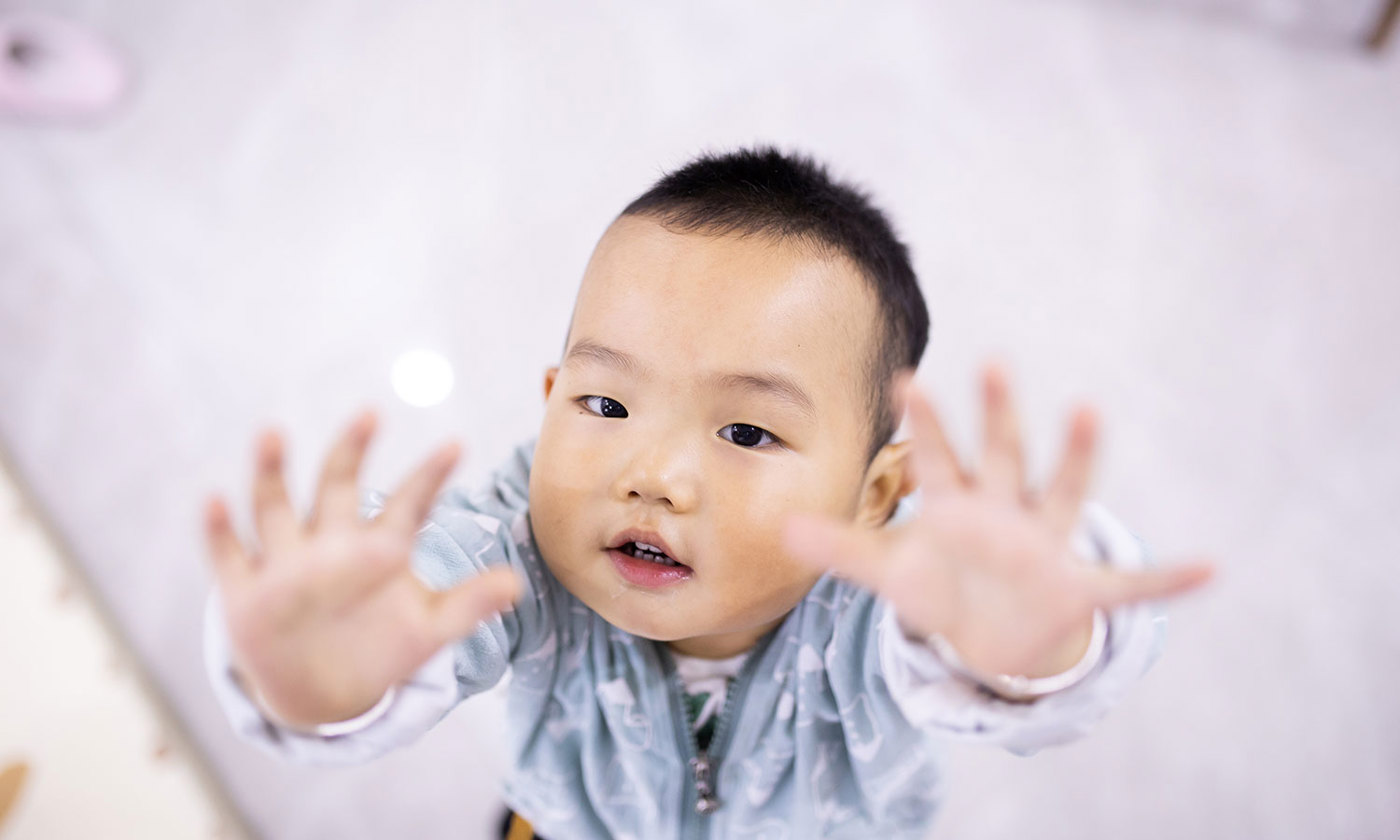
Credit: iStock.com/xijian
When only one parent can put your child to bed, soothe them in the middle of the night, or help when they've fallen down it can be a drain on both parents. The repeated cry of “Mummy/Daddy do it”, can leave one parent feeling overwhelmed and the other rejected.
To put it bluntly, you are either the preferred parent or the non-preferred parent. Both come with their own challenges.
“This phase of parental favouritism typically happens in the early childhood years, with selective preference starting around six months old and intensifying in the following two years,” explains Dr Erinn Hawkins, clinical psychologist and lecturer at Griffith University.
“Before the age of six months, babies may have some preferences, but they are fairly indiscriminate about who provides care to them.
“Children tend to have a preference for their primary carer, but it can also easily be the other carer. It’s dependant on the situation.
“In the early years, children might prefer their same gendered parent, later on, we often see that in the adolescent years, they tend to prefer the opposite gendered parent as what a child needs from their mother or father changes during their development.”
Dr Hawkins adds that there hasn’t been a lot of research on children favouring one parent over the other.
“There is research on the difference in the quality of the relationship in the early years between the child and their mother and the child and their father, but not any research on the strong favouritism for one parent even though we have an understanding that this clinically happens, and I see this happening in my own practice,” she says.
This phase tends to end in the preschool years, around four to five years old.
When it’s hard to love both parents
In good news for the non-preferred parent, parental favouritism has nothing to do with being loved less and actually comes down to the child’s developing cognitive ability.
“What we think is happening is that it’s often very hard for children to hold two attachments at the same time,” explains Dr Hawkins.
“Their cognitive skills just aren’t at the level it needs to be for them to feel confident in loving both parents at the same time.”
She adds that this is sometimes the reason children are completely fine when the preferred parent is removed from the environment.
“For example, when Mum is around, I can show all my love to Mum. If Mum and Dad are in the same room together, I can’t show them both love. But if Mum leaves, I can show love to Dad,” says Dr Hawkins.
When they reach the preschool years, around four to five years old, the growth in their cognitive ability means they realise that they can hold strong feelings of love and attachment for both parents at the same time without it causing internal conflict.
“It’s not just about emotional skill development,” says Dr Hawkins.
“Children really need that cognitive skill development to be able to hold both parents in their mind, and even hold the other parent who is not present at that moment in their mind.”
What we think is happening is that it’s often very hard for children to hold two attachments at the same time. Their cognitive skills just aren’t at the level it needs to be for them to feel confident in loving both parents at the same time.Dr Erinn Hawkins
Stay up to date with the latest news and articles from First Five Years
Thank you for subscribing to our newsletter!
Strategies to share the love
Dr Hawkins advises six strategies for both parents to manage parental favouritism.
1. It’s not personal
It is important for the non-preferred parent to not take the rejection too personally, and equally important for the preferred parent to manage those feelings of rejection by their spouse.
“The non-preferred parent may avoid doing activities with the child when they know they will be rejected by the child, so we sometimes create habits of who does what in the parenting partnership,” says Dr Hawkins.
“The preferred parent needs to acknowledge those potential feelings of rejection experienced by the non-preferred parent and also needs to create space and opportunities for the non-preferred parent to develop a relationship with the child.”
2. Quality over quantity
It’s all about creating quality time for the non-preferred parent to spend with the child.
“In some cases, this might involve the preferred parent needing to leave,” recommends Dr Hawkins.
“We also need to make the activities fun at first, while we allow the relationship with the non-preferred parent to take hold.”
3. Make new habits
Once the groundwork has been established, the non-preferred parent can take on the daily responsibilities that aren’t necessarily fun, like preschool drop off, but are essential in being present in the child’s regular routine.
4. Managing separation anxiety
While the relationship is forming with the non-preferred parent, the preferred parent may need to leave, and the child may experience separation anxiety.
“When you leave, keep it short and simple, and focus less on them missing you but more on when you are returning,” advises Dr Hawkins.
“And when you reunite, make it a moment of reliving what fun things they did during the day to help them focus on the fun they had with the non-preferred parent.”
Dr Hawkins adds that a transitional object, something that reminds them of you while you are away, can help.
5. It’s normal for both of you to be jealous
“Both parents can easily become jealous about the situation, for example, the non-preferred parent can be jealous of the love the other parent gets, and the preferred parent can be jealous that the non-preferred parent can leave so easily, however, try not to see it as a competition,” says Dr Hawkins.
She recommends for parents to create a space to openly talk about their feelings without blaming and shaming each other.
“The focus needs to be on supporting each other in trying to strengthen the relationship each parent has with the child.”
6. It takes patience
Dr Hawkins has one final piece of advice.
“Remember to be patient as breaking down habits can take time and the child can protest against these changes and that is completely normal,” she says.
“If you are firm and tender in letting the other parent have a go, the child will follow suit.
“It’s also important to remember that it doesn’t always have to be one or the other doing the activity, both parents can participate at the same time too.”


